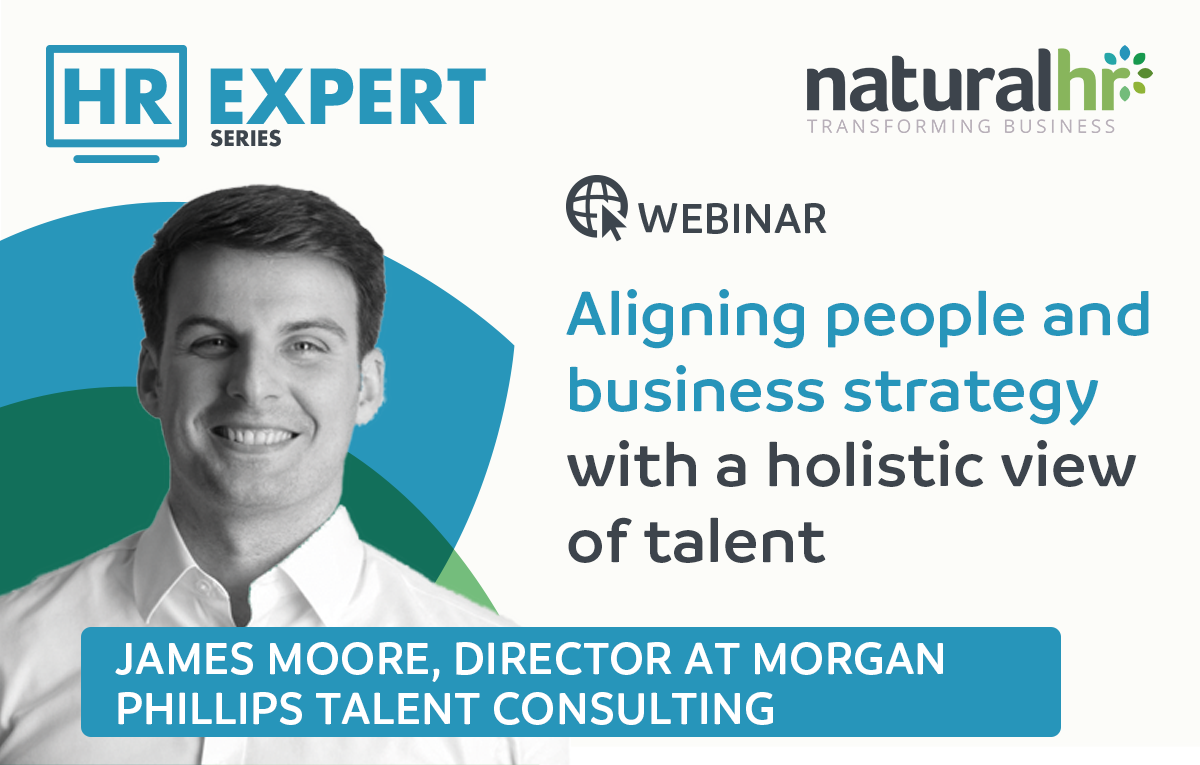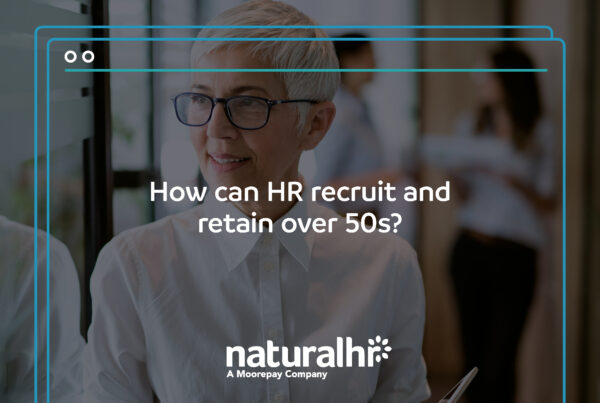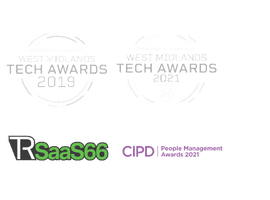
HR leaders are drawn to the prospect of creating a high-performing workforce but often overlook the key ingredients. In fact, companies that align talent with business strategy outperform others by 16%, retain 30% more top performers, and see 34% higher employee performance.
The last 18 months have posed major challenges that saw business and talent strategies put to a rigorous test. As a result, there is a renewed urgency for HR leaders to realign their talent strategy to the wider business goals to factor in changing business dynamics.
This is why we invited, James Moore, a director at Morgan Phillips Talent Consulting, who explored how HR professionals can align people and business strategy with talent in our latest HR Expert webinar.
Building the foundations for success
To align both the people and your business, the first step you need to take is designing a framework for your company’s practical and measurable talent management activities.
With that being said, James discussed how the foundations for any success would be a custom competency model explicitly built around your business. In it, your competency model should be:
- Behaviourally anchored
- Focused on the ‘How’
- Be both observable and measurable
- Reflect your organisational culture and values
- It must be directed towards the future of your business
- It should be clear
- Designed to be integrated into your HR processes
James went on to explain at this stage. It’s all about setting out what success looks like at various levels across your business.
Understanding your talent context
For James, the most crucial step here is to understand that every organisation is unique no matter how your competitors or peers are behaving or acting. You can’t simply copy and paste what they’re doing.
To that end, you need to sit down with your leadership team and understand their high-level approach to talent management and strategy. It’s also where HR and People Management teams need to be involved, as this ‘sit down’ is the first opportunity where misalignment between aligning people and talent strategy can occur.
You need to know, from management:
- How do they want to manage performance?
- How do you differentiate between high, middle and low performance?
- How transparent do you want your organisation to be?
- How will people be held accountable for delivering against these talent KPIs?
The next step is to conduct a context mapping workshop, where you can begin to understand the context of alignment within your business. James went on to explain that by conducting this workshop, you’ll get the data to:
- Identify risk priorities and opportunity areas within your business
- Support both budget setting and allocation
- Help inform talent acquisition strategies
- Inform learning and development initiatives
- Inform secession planning
But why would you do this? For James, you can come out of this meeting with a company-wide agreed view that will help inform everything you do in the future.
Enhancing productivity and developing leaders
In this section, James explored how you can use both your workshop and framework to enhance your businesses productivity further and develop your internal leaders in four distinct areas, including talent acquisition, learning and development initiatives, promotions and succession planning.
Coming out of this internal analysis from your company, you’ll have the ability to:
-
Talent acquisition
- Support early-year talent
- Ensure experienced senior hiring
- Develop your company’s onboarding
-
Learning and development initiatives
- Align your business with strength, and become aware of potential risk areas
- Create personalised learning journeys for your staff
- Deliver the potential of your team at pace to your business
-
Promotions
- Discover if the people in your business are ready/not ready for promotions
- Understand if you need to take a developmental approach
-
Succession planning
- Identify critical roles across your organisation
- Identify potential successors
- Develop appropriate development plans
Talking about the implications, James explained that all of this is driven by the availability of compelling data. Because of it, you now have data that can be used across the entire management cycle.
Using insight to unlock potential
In the final section of this webinar, James talked about how knowledge itself is power. The cumulative output of everything we’ve done is having the ability and insight to unlock your staff’s potential within your business. Ultimately, the data aligned to the framework is equal to giving you a measurable return on investment.
You can use the following insight methods to help unlock the potential of your team:
- 360 Feedback
- Surveys
- Productivity levels
- Promotion rates
- Retention
Through the insights you gain, you’ll then have the ability to unlock the potential through the following business approaches:
- Talent management cycle
- Learning and development
- High potential staff identification
- Promotion
- Succession planning
Expert Webinar Q&A
As with every Natural HR Expert Webinar, the session ends with the floor being opened to questions from viewers. In this session, two questions were asked, they were:
Question: How do you think talent will change in 2022?
Answer: There are many ways you could attack that question. But from what we are seeing, organisations are taking a very different approach. Over the last 18 months, specifically, the previous six months have forced the hand by saying we need to focus on this and retention in 2022.
Question: How would you recommend we gain the support of critical stakeholders in the business if certain people aren’t fully aligned with talent, especially in the kind of remote setting that we now find ourselves in?
Answer: If critical stakeholders are not involved, I guess it is not easy. If I’m honest to get them on board, my advice would be to try and get as much evidence as possible about what it could do and whether that’s case studies or a context map type and show them what needs to happen why.
If you want to learn more about other important factors in your learning and development strategy going forward, download our free guide.
Introducing the next Expert HR webinar
We’re pleased to announce that November’s Expert Webinar will take place on November 17th, 2021, at 11:30 am and will be hosted by Inge Woudstra, Principal Diversity and Inclusion Consultant from Voice at The Table.
The session is titled, Diversity & Inclusion in Talent Management – Is your employee life cycle ready for future talent?

With new opportunities and challenges continuing to appear from the pandemic, today’s workforce must seize the chance to design and encourage a life cycle that leads to longevity, success, and factors in new preferences that allow your future talent to thrive.
During our next HR Expert webinar, Inge will showcase how to create an inclusive recruitment and promotion process that enables you to attract and develop the very best talent.
· The impact of bias in the workplace
· Using data to decide which areas to focus on in your employee’s life cycle
· The impact of the new hybrid world on inclusion
· Key principles, ideas, and quick wins to create a workplace where all talent can thrive
Click here to book your ticket.





